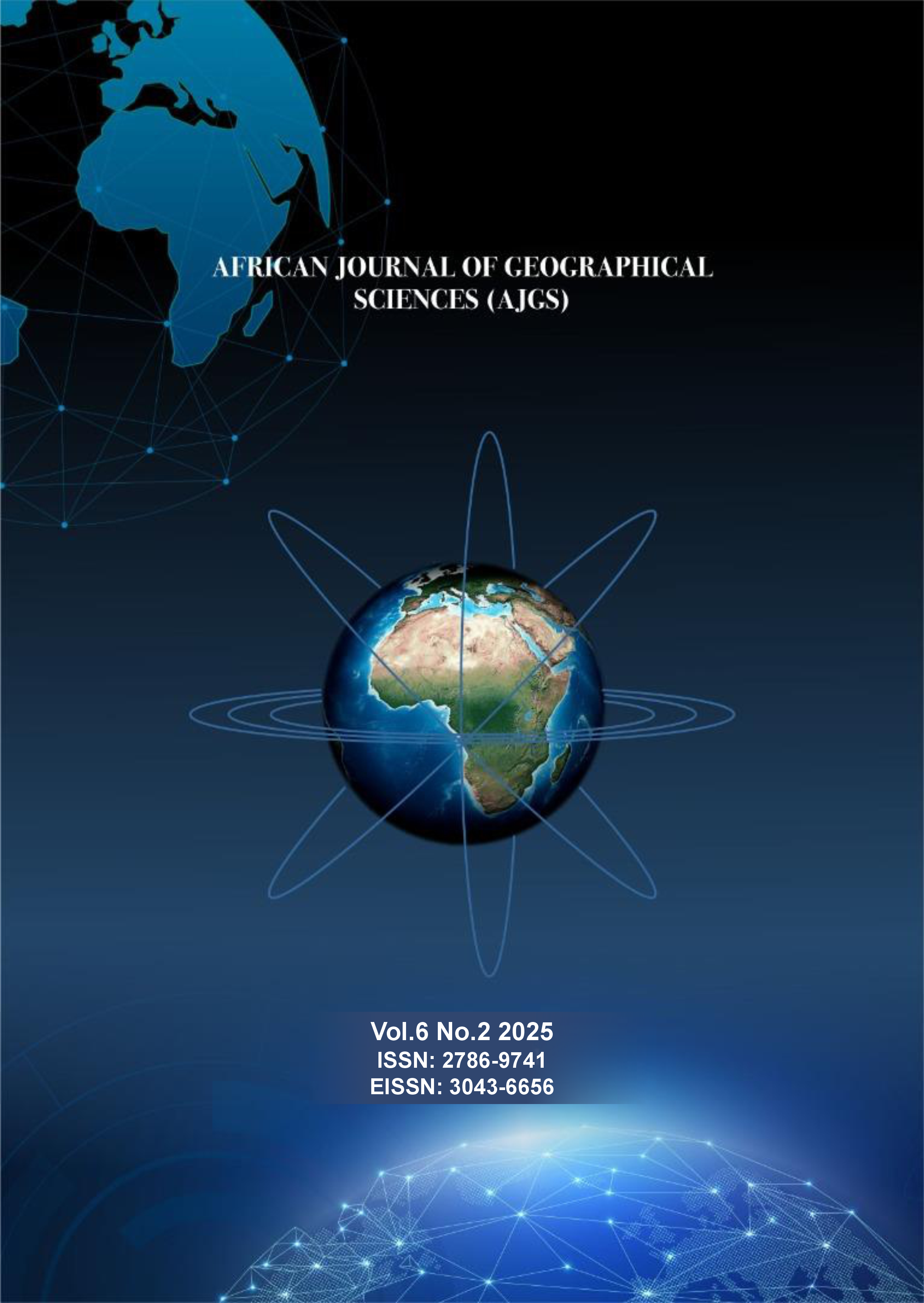EROSION AS A FACTOR OF LANDSCAPE DESTRUCTION IN ILARO, YEWA SOUTH, SOUTHWEST NIGERIA
Main Article Content
Abstract
The study focuses on land erosion threat which has remained a major factor of landscape destruction in Ilaro, Yewa South, Ogun State, Nigeria. The study was wheeled by four objectives with the aim of examining the environmental impact of land erosion in the Ilaro town (the study area) with the view to curtailing the aged challenge through a research collaboration effort. Methodologically, the population for the study comprises of household population of Ilaro area covering 16 neighbourhoods within Ilaro community divided into five strata and a sample size of 397 estimated through Taro Yamane’s method of sample selection. The data generated through the use of questionnaire instrument were analysed using both descriptive and inferential statistical analysis methods to depict the information on erosion as it affects different segments of the study area. Findings from Ilaro building conditions revealed that 49% (percent) of the houses were built with cement blocks, and 27 percent were plastered. Investigation revealed that 46 percent of all the houses’ walls were found with cracks which might be as a result of soil erosion effects on the structures. Geologically, laterite soil was found to be most dominant at 48.8% among other soil types in the study area. From the study, the solution of erosion menace could be salvaged through the long-term and short-term measures involving full commitment of the government and private organisations within the state. The study recommends that: erosion channels should be diverted to critical areas of hydrological system and there should be a regular maintenance of road channels to keep drains clean so as to prevent flooding and also installing diversion at drains and culverts where runoff velocity can trigger erosion; massive public awareness through campaign on the problems and consequences of land erosion, as well as enacting environmental laws and serious penalties for offenders; community efforts and commitments should be advised to contribute their quota through local means.
Article Details
References
Abdulfatai, A., Okunlola, I.A, Akande, W.G., Momoh, L.O., Ibrahim, K.O.(2014). Review of Gully Erosion in Nigeria: Causes, Impacts and Possible Solutions. Journal of Geosciencesand Geomatics. Vol. 2, issue 3.
Akpokodje, E.G.,Tse, A.C. and Ekeocha, N..(2010) Gully Erosion Geohazards in Southeatern Nigeria and Management Implications. Scientia Africana, 9 (1), 20-36.
AL-Ahmadi, A.A (2019) Assessing the Impacts of Climate Change on Soil Erosion in a Semi-Arid Watershed. Journal of Arid Environments. Vol.163, pp. 53-63. DOI: 10.1016/j.jaridenv.2019.02.004
Albert, A. A., Samson, A. A., Peter, O. O. & Olufunmilayo, A. O. (2006). An Assessment of the Socio-Economic Impacts of Soil Erosion in South-Eastern Nigeria, Shaping the Change, XXIII FIG Congress Munich, Germany, pp. 12, 2006.
Bradshaw, C. J. A., & Brook, B. W. (2014). Human Population Reduction is Not a Quick Fix for Environmental Problems. Proceedings of the National Academy of Sciences, 111(46), 6610-16615.
Brown, L.R. (1997). The Agricultural Link: How Environmental Deterioration Could Disrupt Economic Progress, Washington, D.DC, Worldwatch Institute.
Ezenekwe I. E. (2010). Gully Erosion in Anambra State:Nanka Patrotic Unio Journal Vol.1 Pp. 910, March, 2010.
Kwang, J.S, Thaler, Larsen, I.J (2023) The future Soil of Midwestern United United States, https://doi.org/10.1029/2022EF003104
Mishra, A.K (2020) Soil Erosion and Sediment Yield in a Tropical Watershed. Journal of Hydrology, Vol. 581 pp.124386. DOI: 10.1016/j.jhydrol.2019.124386
Morgan, R.P.C (2019) Soil Erosion: Processes, Prediction, Measurement, and Control. Wiley-Blackwell, ISBN: 978-1-119-39453-6
Nwafor, J. C. (2006). Environmental Impact Assessment for Sustainable Development: The Nigerian Perspective (1st ed.). EDPCA Publishers. Enugu
Obaje, N. G (2009) Geology and Mineral Resources of Nigeria, London: Springer Dordrecht Heidelberg, Pp.5 -14
Onyegbule PE (2010). An assessment of socio-ecomic impact (effects) of Angulu Nanka Gully erosion, Anambra State Southern Nigeria. Unpublished M Sc. Thesis, Department of Environmental Science, Nnamdi Azikiwe University Uwka, Anambra State. Nigeria
Osadebe, C. C. and Enuvie, G (2008). Factor Analysis of Soil Spatial Variability in Gully Erosion Area of south-eastern Nigeria: A Case Study of Agulu- Nanka- Oko Area, Scientia Africana, Vol. 7 (No.2), pp. 45,
Pimentel D, (2006) Soil Erosion: A Food and Environmental Threat, Journal of Environment,Development and Sustainability Vol. 8 119-137
Pimentel D., Havey C., Resosudarmo, P., Sinclair, K., Kurz, D., McNair, M., Crist, S., Sphpritz, L., Fitton, L., Safffouri, R. and Blair, R., (1995). Environmental and Economic cost of soil erosion and conservation benefits', Science 267, 1117-1123
Singh, S.K (2020) Soil Erosion Modelling Using Machine Learning Algorithms. Journal Hydroinformatics, vol. 22, pp. 537-554. DOI: 10.2166/hydro.2020.130
Wang. J, Yang J; Zhi L, Liwe, K, Qingyao, L. Jianweim, F and Xue, W (2025) Soil Erosion based on Remote Sensing Technology. Agriculture, 15(1), 18 https://doi.org/10.3390/agriculture15010018
Yu XX, Niu JZ, and Xu JL. (2004). Research on the Ecological Restoration in Mountain Watershed. Science of Soil and Water Conservation. 2(1): 4–10.
Zhang XW, Zhou YM, Li XS, Yuan C, Yan NN, and Wu BF. (2010) A Review of Remote Sensing Application in Soil Erosion Assessment. Chinese Journal of Soil Science.41(4): 1010–1017
